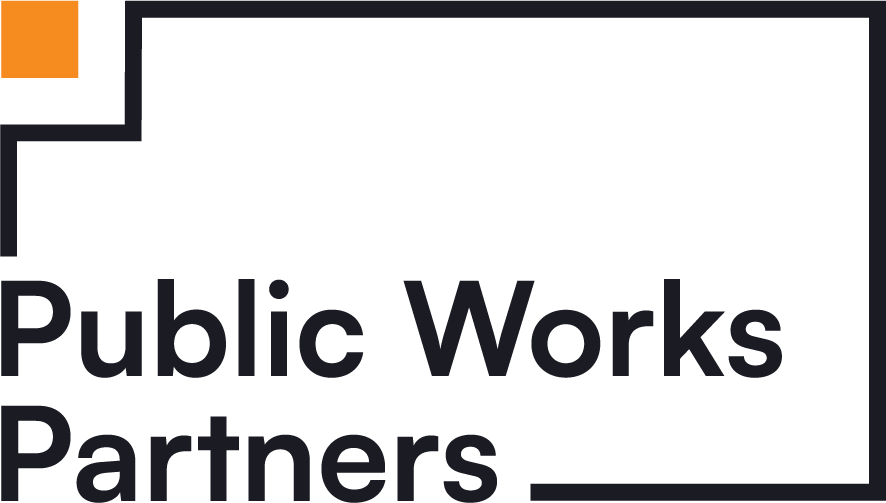Last summer, Public Works Partners was engaged through the Criminal Justice Investment Initiative (CJII) to support Drive Change, an organization that runs a paid Fellowship for formerly incarcerated youth launching their careers in the food sector, as they developed a business plan to support a new fee-for-service model. Drive Change’s Hospitality for Social Justice (HSJ) program is creating a community of food business partners that are committed to eliminating the injustices within the food and hospitality industry. Drive Change originally launched HSJ in 2018 as a free service in an effort to build more equitable workplaces and provide quality employment for Fellows. The HSJ programming has evolved into a series of workshops designed to build a foundational knowledge of the historical oppression within the industry, and provides industry leaders with tools to begin taking active steps towards anti-racism and equity within their businesses. Drive Change hoped the new HSJ model would “allow the program to be self-sustaining” while “holding businesses accountable and building an understanding that this work requires investment,” Sarah Perlmeter, Hospitality for Social Justice Manager, said.
Why your mission-driven organization needs a business plan
A business plan is a formal document that outlines a business’ goals, as well as strategies and timeframes for achieving those goals. A good business plan will set your organization apart by giving you a clear structure for revenue generation and programming that allows you to focus on moving forward your long-term ambitions. This is especially true for mission-driven organizations, where the need to secure funding can demand significant attention and time, drawing resources away from service delivery and goal advancement and preventing these areas from receiving the attention they deserve. With a solid business plan that is built with your mission at its core, you’ll be able to simultaneously tackle revenue generation and mission-fulfillment in a way that makes sense for your organization. This was just what Drive Change was looking for.
Drive Change needed a plan for launching their new program that considered the state of the hospitality industry while staying true to their goal of creating a business model that centers anti-racism and builds businesses’ understanding of systems of historical oppression within the industry. That’s where Public Works came in. We worked with the Drive Change team to develop and understand their goals, evaluate the field, and build a plan that worked for them and their partners. Aurelia Aceves Hogan, who led the Public Works team for this engagement, said that “Public Works is uniquely positioned to provide business planning services to social enterprise because we have deep knowledge of nonprofit operations and financing—we can think really creatively and innovatively within that sphere.” Public Works blends our expertise in management and financial analysis with our knowledge of the real challenges facing nonprofits to design business plans that are uniquely suited to support each mission. Here are the five components of a sustainable business plan.
5 steps to a business plan that fulfills your mission
1. Make your goals crystal clear
Build a business plan that aligns with your mission. To make this happen, you need to define your goals and their relationship to your mission in the clearest terms possible. This should come first, and everything else should be built around this definition. That way, you can ensure that each component is designed to support your mission.
In Drive Change’s case, their goal was to develop a business plan for the HSJ program that was itself anti-racist, which would support their work to foster accountability in the hospitality industry and provide businesses with the tools to actively move toward equity, all while establishing a self-sufficient revenue stream. As Sarah said, “If we’re running anti-racism trainings, our business model also needs to reflect equity and anti-racism within it”. This commitment to building their values into the structure of the program was the foundation of the business model and our subsequent work.
2. Know what you bring to the table
Knowing your organization’s value add is an essential part of designing a sustainable business plan. Look to the services others are offering and assess how your programming fills in the gaps. This is also a good time to identify and draw out your organization’s expertise. You know what you’re good at—put it to work for you!
The Public Works team worked closely with Drive Change “to build the ship as we were still designing it,” Sarah said. “There was a ton of hands-on support, that for me, when we have a super small team, not only helped to create the actual plan but was a huge resource to talk through concerns, questions and thought process.” These conversations allowed the team to internalize the new program’s strengths in a thoughtful way that held fast to Drive Change’s mission. Public Works also brought a clear organizational process that “made tough topics more approachable,” Aurelia said, which allowed the team to focus on the pieces fundamental to building a successful program.
3. Research!
Once you have set parameters for your programming and have a clear sense of your value-add, it is time to do some research. You’ll need to understand both what your internal capacity and needs are as well as external trends and constraints. The goal is to develop a business plan that covers your needs while remaining accessible to your intended audience.
To support Drive Change, the Public Works team used our Nonprofit Tune-Up tool to develop an understanding of the organization’s current capacity and financials, which allowed us to have discussions with Drive Change about where they were and where they wanted to go. From here, we dove into research on the hospitality industry in New York City and anti-racism trainings and programs. We developed a sense of the program delivery models that would work best for the hospitality industry, the price-points similar anti-racism programs were offered at, how they presented themselves, and their market. Business planning during the pandemic was a challenge, Aurelia said, “since rules regulating the hospitality industry were changing on an almost daily basis.” This was especially true for the HSJ program, which is geared entirely towards one of the industries that has been hit hardest by the pandemic. While protests calling for racial justice and systems reform added a sense of urgency to this work, Drive Change was sensitive to the ongoing crisis restaurants faced. “We were able to be really honest about our expectations and Public Works was able to really hear that and speak to the right people to inform the business plan in an authentic way,” Sarah said. Ultimately, we developed a business plan that relies on a sliding pay scale structure that meets the needs of different businesses through an anti-racist and equity lens.
4. Develop tools and benchmarks
Creating the right tools to gauge the success of your new business plan will ensure that the plan supports you as you move toward your goals. Make sure that the tools are practical and ready to use immediately. It is also helpful for the tools to be flexible and modified easily based on different considerations that could impact implementation. Developing clear benchmarks that are drawn from research into your organization’s outcomes as well as similar organizations in the field will establish achievable objectives along the way to your ultimate goals. Together, these tools and benchmarks will position you to measure successes and adapt as needed.
Public Works developed a set of tools that allows Drive Change to plug different scenarios in and test them out, which will allow them to develop projections on their own based on program participation, feedback, and outcomes. This was important to the Drive Change team because of rapidly changing circumstances in the hospitality industry and the new nature of the sliding pay scale model. The tool gave the team numbers that allowed them to jump right in, Sarah said, while giving them room to grow.
5. Be flexible where it counts
Developing your business plan before you launch your program allows you to align every piece of planning with your goals and overall mission prior to launch, but it also means you may need to adjust based on actual programmatic outcomes. Identify areas that won’t change, and then develop options for what can. This will position you to make smart choices in real time, while preserving the most important components of the plan.
Our work positioned Drive Change to develop and launch the HSJ program with confidence and the knowledge that their program was offered at price points that would work for their prospective clients. Now that they’ve registered the first cohort, which is made up of an exciting mix of hospitality industry leaders and innovators, Drive Change is ready to review the business plan, flesh out the program budget, and adjust to make sure they can continue to use the tool as effectively and efficiently as possible.

Public Works was also engaged to build a business plan for Sweet Generation, another social enterprise focused on the hospitality industry and supported by CJII. While Sweet Generation’s goals and audience differed from Drive Change’s, the Public Works team followed the same five steps to understand their needs and design a business plan that uniquely advances their goals. Sweet Generation just opened a new location in Bushwick (with a grand opening the last weekend in February!), and they will use their business plan to expand service offerings and fully utilize their expanded space.
“The opportunity to work with Drive Change and Sweet Generation to create business plans was a privilege, and deeply meaningful because of their missions and the context for this work – a global health pandemic and racial reckoning in the United States. We worked in partnership to position these social enterprises to stay true to their values and operate sustainable businesses” Aurelia, who managed both projects, said. “I’m grateful that my team at Public Works has the opportunity to work on urgent issues with mission-driven organizations, and that we bring the knowledge and skills to support small businesses like Drive Change and Sweet Generation to ensure their viability.”
Is your mission-driven business plan everything you need it to be? Assess your plan using the steps outlined above, and then get in touch to discuss how Public Works can help you develop a business plan that meets your needs.





